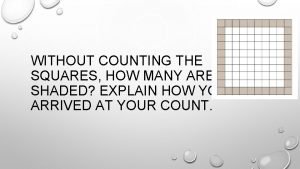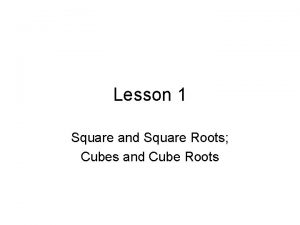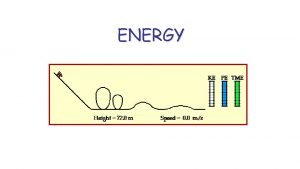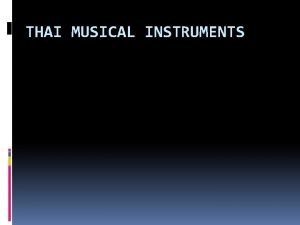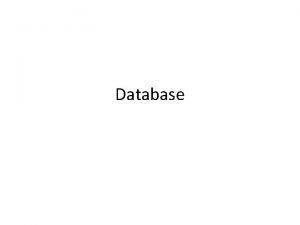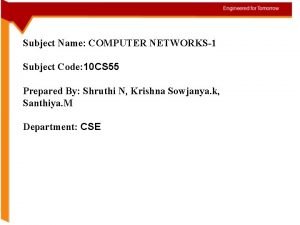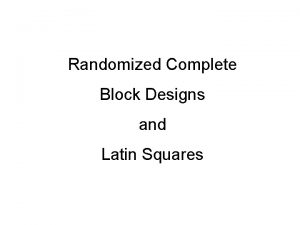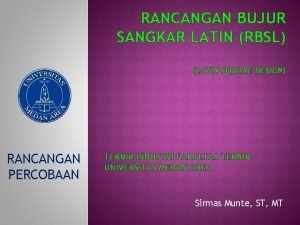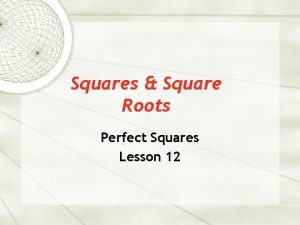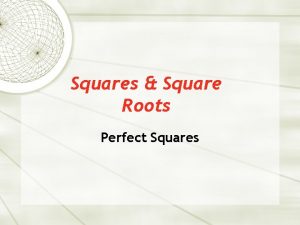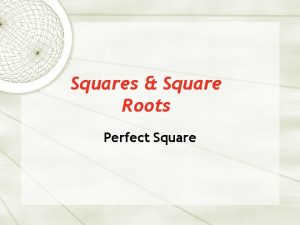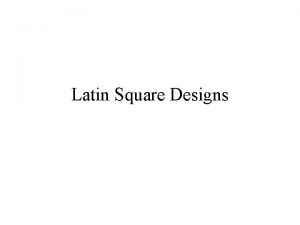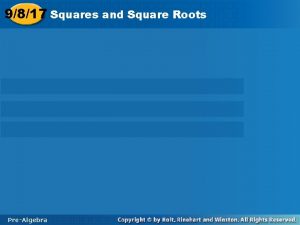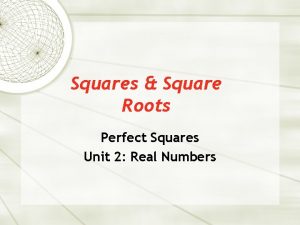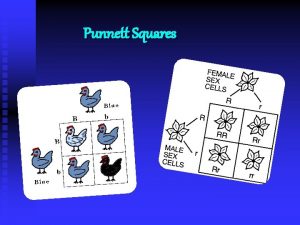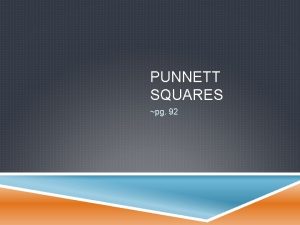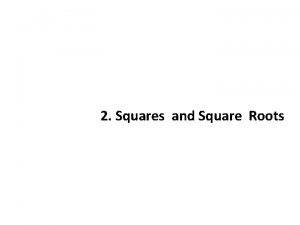Latin Square Design Traditionally latin squares have two















- Slides: 15

Latin Square Design Traditionally, latin squares have two blocks, 1 treatment, all of size n n Yandell introduces latin squares as an incomplete factorial design instead n – Though his example seems to have at least one block (batch) n Latin squares have recently shown up as parsimonious factorial designs for simulation studies

Latin Square Design Motivation n Student project example – 4 drivers, 4 times, 4 routes – Y=elapsed time n Latin Square structure can be natural (observer can only be in 1 place at 1 time) n Observer, place and time are natural blocks for a Latin Square

Latin Square Design Example – Region II Science Fair years ago (7 by 7 design) – Row factor—Chemical – Column factor—Day (Block? ) – Treatment—Fly Group (Block? ) – Response—Number of flies (out of 20) not avoiding the chemical

Latin Square Design Data

Power Analysis in Latin Squares n For unreplicated squares, we increase power by increasing n (which may not be practical) n The denominator df is (n-2)(n-1)

Power Analysis in Replicated Latin Squares n For replicated squares, the denominator df depends on the method of replication; see Montgomery

Graeco-Latin Square Design n Suppose we have a Latin Square Design with a third blocking variable (indicated by font color): A B C D A B C

Graeco-Latin Square Design (Fonts) n Suppose we have a Latin Square Design with a third blocking variable (indicated by font style): A B C D A B C

Orthonolaity in Graeco-Latin Squares n Is the third blocking variable orthogonal to the treatment and blocks? n How do we account for the third blocking factor? n We will use Greek letters to denote a third blocking variable

Orthogonal Graeco-Latin Square (colors) A B C D B A D C C D A B D C B A

Orthogonal Graeco-Latin Square (fonts) A B C D B A D C C D A B D C B A

Graeco-Latin Square (greek letters) 1 Row 2 3 4 1 Aa Bd Cb Dg Column 2 3 4 B b Cg Dd A g Db Ca Da A d B g Cd B a A b

Graeco-Latin Square Randomization n Orthogonal designs do not exist for n=6 n Randomization – Standard square – Rows – Columns – Latin letters – Greek letters

Graeco-Latin Square Inference n Total df is n 2 -1=(n-1)(n+1) n Maximum number of blocks is n-1 – n-1 df for Treatment – n-1 df for each of n-1 blocks--(n-1)2 df – n-1 df for error n Hypersquares (# of blocks > 3) are used for screening designs

Conclusions n We will explore some interesting extensions of Latin Squares in the text’s last chapter – Replicated Latin Squares – Crossover Designs – Residual Effects in Crossover designs n But first we need to learn some more about blocking…
 How many squares
How many squares 4 squares = 5 9 squares =
4 squares = 5 9 squares = Evaluate square root
Evaluate square root How to evaluate a square root
How to evaluate a square root Opposite of squaring
Opposite of squaring Works written by shakespeare often have an unhappy ending
Works written by shakespeare often have an unhappy ending Light cured gel enhancements should be maintained _____.
Light cured gel enhancements should be maintained _____. Defnition of energy
Defnition of energy What meter is used in the japanese song “sakura”? *
What meter is used in the japanese song “sakura”? * Thailand music instruments
Thailand music instruments Traditionally, composed of a collection of file folders.
Traditionally, composed of a collection of file folders. Computer subject code
Computer subject code Traditionally the internet checksum is
Traditionally the internet checksum is Duncan's multiple range test
Duncan's multiple range test Contoh soal rbsl
Contoh soal rbsl Graeco-latin square design example
Graeco-latin square design example
